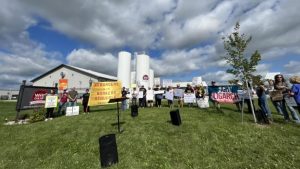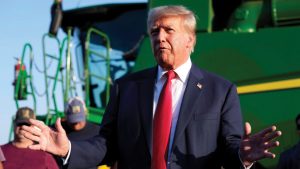
About a month ago, I had the opportunity to visit Barstow’s Longview Farm, a dairy farm in western Massachusetts. I learned a lot while I was there, including how dairy farming can play an important role in sustainability. As a registered dietitian, I believe it is critical to have some understanding of where our food comes from, so I am pleased to share my experience with you here.
Sustainable farming at Barstow’s Longview Farm
When you think about cow farming, you might have a negative connotation when it comes to climate change. Cow’s inherently release a greenhouse gas, methane, from burping and in their manure. Cows are the top agricultural source of methane, however, in the US, they are responsible for just four percent of all greenhouse gas emissions (1).
At Barstow’s and at dairy farms across our region, farmers are doing their part to implement several sustainable farming practices to help offset the methane their cows produce, care for the land, and mitigate climate change.
-Anaerobic digester: The most impressive and advanced sustainability tool they use is an anaerobic digester. Think of this tool as a giant stomach that uses bacteria to digest manure and food waste without oxygen. Local businesses come to Barstow’s to drop off their food waste for the anaerobic digester, too! Anaerobic digestion captures the methane gas, which is then used as energy for heat, electricity, and renewable natural gas. It also puts out fertilizer that the farm can then use to fertilize their crops. The anaerobic digester at Barstow’s offsets 85% of their emissions!
-Grow what the cows eat: The fertilizer produced from the anaerobic digester allows Barstow’s to grow hay and corn on their farmland, which will then be harvested and fed to their dairy cows.
-Cover crops: After dairy farmers harvest their main crop, like corn, in the fall – they plant cover crops that grow through the winter on the same field. A cover crop acts as a protective blanket and helps to sequester carbon, hold water, and enrich the soil with nutrients through the winter. Some cover crop examples include winter cereal rye, annual ryegrass, oats, clover, vetch, radish, and turnip.
-No-till planting: Another sustainable agriculture practice used at Barstow’s is no-till planting. It is an agricultural technique for growing crops or pasture without disturbing the soil through tillage. This decreases the amount of soil erosion and helps to sequester carbon in the ground from the atmosphere.
What do dairy cows eat?
Dairy cows at Barstow’s eat a well-balanced diet that meets all of their macronutrient and micronutrient needs. Their diet is analyzed and determined by an animal nutritionist who specializes in dairy cows.
Dairy cows eat a lot of hay (or grass), mixed with some grain like corn. Fun fact – cows can eat the entire stalk of corn, which in turn eliminates food waste from corn processing. Additionally, dairy cows eat byproducts of human food production, including cranberry hulls that come from cranberries grown in eastern Massachusetts.
It’s a sustainable cycle: cows can eat foods that humans are unable to (like cranberry hulls), and they in turn produce dairy milk that humans can eat in the form of milk, cheese, ice cream, and yogurt.
Does dairy milk contain antibiotics?
Just like humans, cows get sick sometimes. Antibiotics are a safe way to treat certain illnesses in cows to keep them healthy.
However, you will never find milk that has antibiotics sold to you at any grocery store. It’s actually illegal to sell milk that does contain antibiotics! So, any labels on milk cartons you see that proclaim the milk is antibiotic free are purely marketing tactics.
At Barstow’s, cows are milked with a robotic cow milker which analyzes the makeup of their milk. If any antibiotics are detected in the milk, it is discarded immediately. The milk that is used for human consumption is entirely safe, nutritionally balanced, and entirely free of antibiotics or other contaminants. Milk is tested numerous times before it reaches the dairy case, ensuring its safety and quality.
With the right sustainable agriculture practices, dairy farming can be and is a part of climate solutions and sustainability. At Barstow’s and many other dairy farms throughout New England, you’ll see both innovative and more traditional sustainable practices at work which benefits the cows, the environment, the community, and us, the consumers!



















